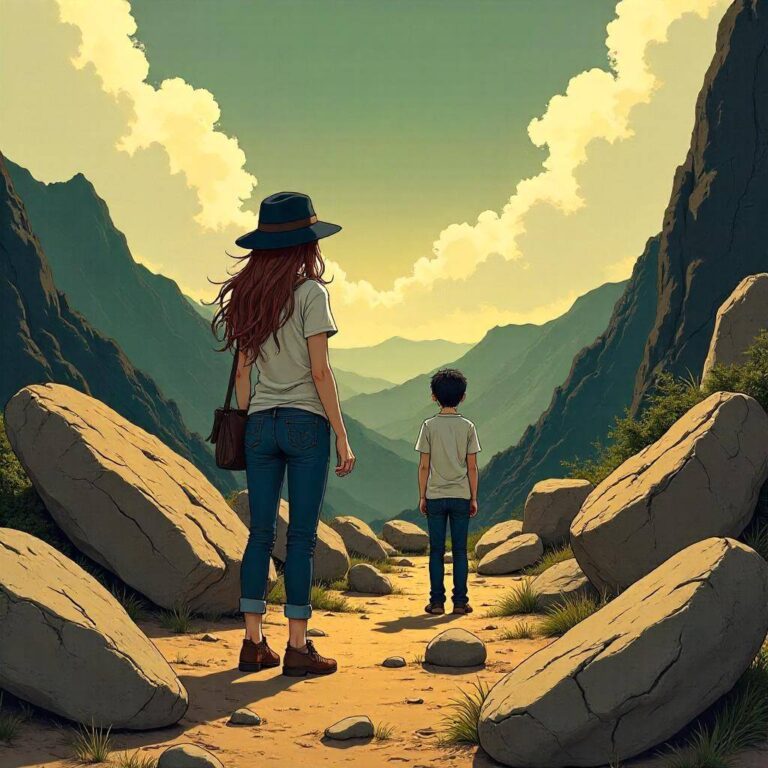Reader’s Question:
I have a question about “In This Corner of the World.” When Suzu’s brother, Yoichi, passed away, they received a stone instead of his ashes. Was this something that actually happened during that time period, or is it fictional?
A Deep Dive into “In This Corner of the World”: The
Reality Behind the Fiction
When it comes to anime, there’s something incredibly special about those that weave history into their narratives. One such gem is “In This Corner of the World” (Kono Sekai no Katasumi ni), a film that resonates with both beauty and poignancy. Recently, I stumbled upon a fascinating question regarding the film: Why did Suzu’s family receive a stone instead of her brother Yoichi’s ashes after his passing? Was this a mere work of fiction, or was there a genuine historical context to it? Buckle up, dear readers, as we journey together through this emotional landscape and explore the real-life shadows that linger behind this poignant tale.
The Stone: A Symbol of Loss
To address the question directly, I can confirm that the use of a stone instead of ashes was not just a fictional plot device. During World War II, especially in Japan, the chaos and devastation led to scenarios where families couldn’t recover the remains of their loved ones. The reality was stark. Many soldiers went missing in battle, and in some cases, it was impossible to retrieve their bodies. So, what does a family do when faced with such profound loss? Imagine being handed a stone—something ordinary, yet heavy with meaning. It’s a symbol, a marker of a life lost but never forgotten. This practice of sending stones in place of ashes became prevalent during that turbulent time. It’s heart-wrenching to think about, but it adds layers to the narrative in “In This Corner of the World.” It’s not just fiction; it’s rooted deeply in the historical fabric of wartime Japan. As I reflected on this, I couldn’t help but think of my own experiences with loss. It makes you realize how fragile life is and how fleeting moments can be. I remember losing a beloved pet once; we buried him in the backyard, and I placed a simple stone on his grave—an understated yet powerful tribute. It may not be the same as losing a family member to war, but the emotions of grief and remembrance can be surprisingly similar.
The Authenticity Behind the Art
Now, let’s talk about the creators of this stunning film. The original manga was written by Fumiyo Kouno, and she conducted thorough research to depict life in wartime Japan authentically. This level of dedication is palpable throughout the film; you can see it in the characters’ everyday struggles, in their raw emotions, and in the stark realities they face. Director Sunao Katabuchi also did his homework. His meticulous attention to detail ensures that viewers aren’t just watching a story unfold; they’re experiencing a slice of history. I remember the first time I watched the film and was struck by its artistic visuals and the slow, almost meditative pacing. It’s a love letter to resilience, a reminder of the human spirit’s unwavering strength, even in the face of loss.
But I have to admit, I found myself feeling a little lost at times. The film immerses you in a world that’s both beautiful and brutal. I often had to pause, take a breath, and just absorb what I was watching. It’s not your typical anime filled with flashy battles or over-the-top antics. Instead, it’s a gentle reminder of the everyday lives that were uprooted during the war. That emotional connection is what keeps me coming back to this film, time and time again.
Personal Reflection: Lessons from Loss
While the film is a work of art, it also serves as a powerful commentary on the impacts of war—something I think we can all learn from. It’s easy to become desensitized to violence and conflict in media, but “In This Corner of the World” pulls you in and forces you to confront the emotional realities of loss. Every character, every stone, every moment is a reminder of the people who have been affected by war. We might not all have experienced the horrors of war firsthand, but we all know loss. And in a way, the film connects us to those feelings, allowing us to reflect on our own experiences with love and loss. I found myself thinking about how we honor those we’ve lost. Whether it’s through a stone on a grave or cherished memories we keep alive in our hearts, it’s vital to acknowledge that loss is a part of life. It’s a bittersweet experience—one that brings sadness but also gratitude for the time we had with those we love.
Conclusion: Embracing the Narrative
So, the next time you find yourself watching “In This Corner of the World,” take a moment to appreciate not just the artistry but the depth of history that surrounds it. It’s more than just a story; it’s a reflection on the human experience. The stones we carry—whether they are literal or metaphorical—remind us of our shared history and the bonds that connect us all. Feel free to share your thoughts or experiences with loss in the comments below. Have you watched the film? How did it resonate with you? Let’s keep this conversation going, as we navigate the beautiful, messy tapestry that is life.



